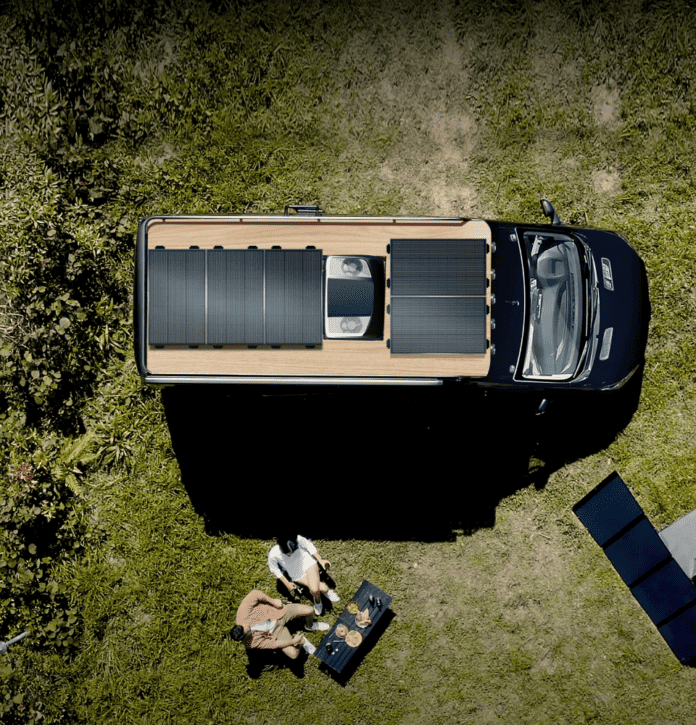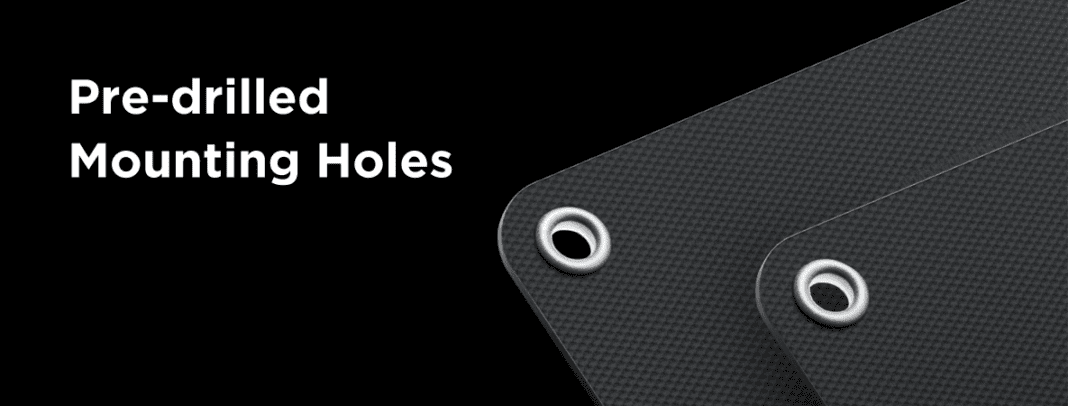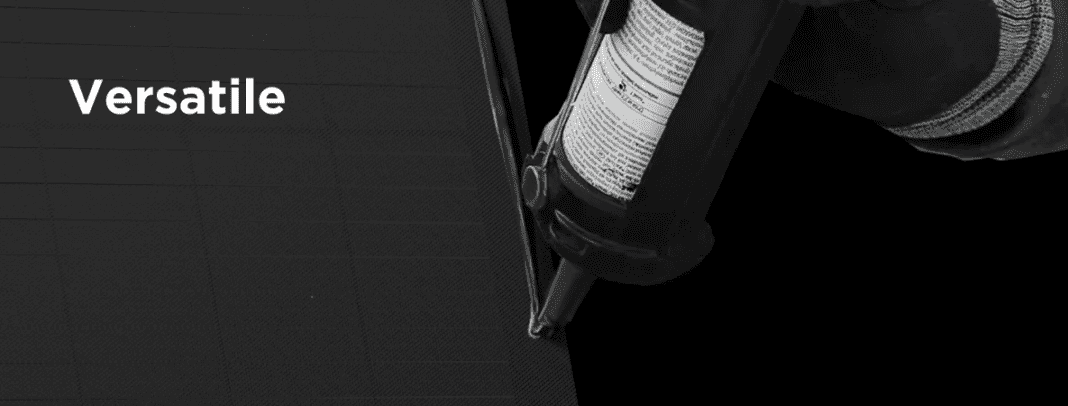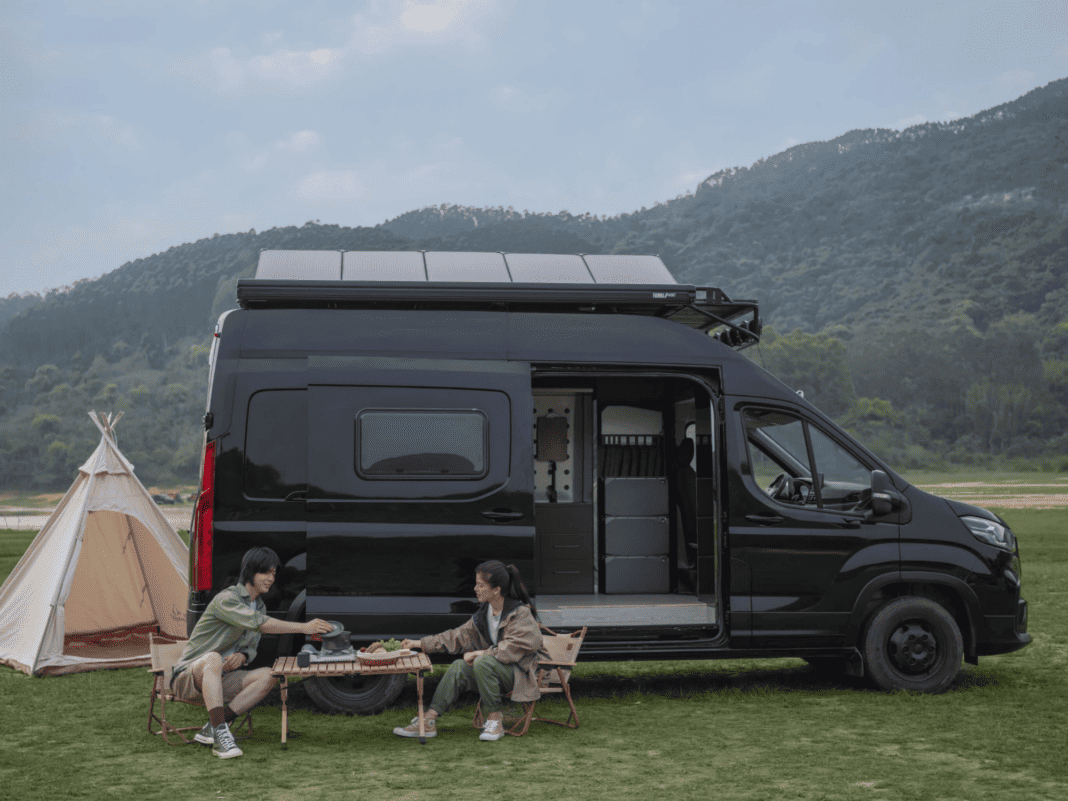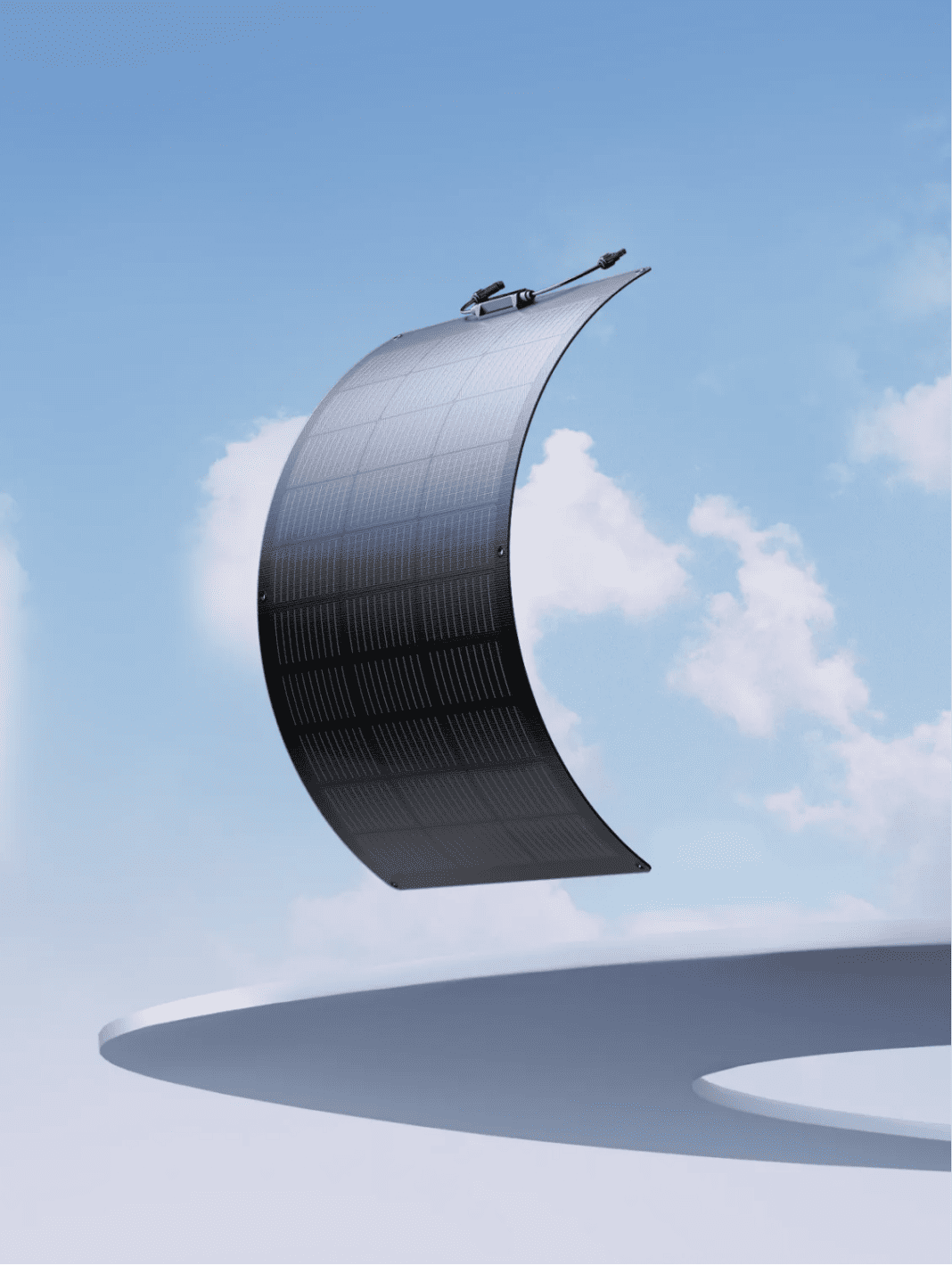RV owners are increasingly switching to solar to take advantage of its energy savings and off-grid capabilities. Out of all the different types of solar panels available, many are turning to flexible photovoltaics.
Flexible solar panels maximize the surface area of your RV’s roof. They have incredible flex, making them easy to mount on curved and irregular-shaped surfaces.
If you want to install flexible photovoltaics onto your RV, you’ll need the right equipment and step-by-step instructions.
Find everything you need to do it the right way here.
What Equipment Do You Need To Mount Flexible Solar Panels on an RV?
The equipment you will need depends on the installation method you choose.
First, is the roof of your RV rigid or made of canvas?
For obvious reasons, there are different installation approaches for canvas and rigid roofs.
Since RVs with solid metal or fibreglass roofs are more common, this article will focus on the best way to install flexible solar panels on a solid surface.
When installing photovoltaics on a rigid roof, there are several methods and mounting materials to consider.
You’ll need the flexible photovoltaic (PV) panels first. Options like the EcoFlow 100W Flexible Solar Panels are lightweight and can flex up to 258°. They’re excellent for mounting to curved and irregular surfaces. And unlike most thin-film flexible solar panels, they have an industry-leading efficiency rating of 23%.
With very few exceptions, you can’t connect solar panels directly to your appliances or RV electrical system. You’ll also need a portable power station, power kit, or other balance of system (BOS).
Typical BOS components required by any off-grid solar power system include:
You can build your system piece-by-piece using separate components from different manufacturers. Going DIY can be a challenge, especially if you don’t have extensive experience building electronics. And it’s easy to run into compatibility issues between manufacturers’ components and solar panels.
Many people avoid the hassle by buying a plug-and-play solution like EcoFlow’s solar generators. Solar generators include a PV panel(s) and a portable power station — everything you need to get off-grid electricity generation up and running.
EcoFlow’s portable power stations, like the DELTA 2, offer AC/DC and USB-C charging in addition to direct solar input, so you’ll always have options to stay charged on the go.
Now that we’ve explored what you need in addition to flexible solar panels for them to function, let’s look at the step-by-step installation.
Luckily, it’s relatively easy!
How To Mount Flexible Solar Panels on Your RV
Once you’ve purchased your solar panels and portable power station, it’s time to install the panels.
It’s crucial to remember that flexible solar panels alone can only produce a minimal amount of electricity. For most applications, you’ll want to combine them with rigid solar panels, which are easy to permanently mount on level surfaces — like your RV’s roof.
Here we’ll focus on flexible solar panel installation only — step-by-step.
1. Purchase the Right Tools
With EcoFlow’s flexible solar panels, there are two easy installation methods. One is to screw them directly onto the exterior of your RV using a drill or screwdriver. The PV panels come with six pre-drilled holes — one in each corner and 2 in the middle on either side of the frame.
One of the main advantages of flexible solar panels is their lightweight, low-profile build. If you’d rather not drill into your RV’s exterior, you can permanently affix them to your vehicle using silicone-based adhesives like SG20 or Fix8. Or a double-sided acrylic foam tape like 3M VHB Tape. This isn’t a viable option with heavier-weight, thicker rigid solar panels.
2. Plan Your Solar Panel Layout
Lay out your flexible panels and mark their locations on your RV’s roof with coloured tape or a wax pencil.
Avoid areas where a satellite dish or air conditioner could cast shade.
Also, leave about 0.79 inches (20 mm) between each panel if you install multiple panels so that you can interconnect the panels with cables.
3. Mount the Flexible Panels
Screw Mounting: Position the solar panel where you want it mounted. Using a pen or marker, make a marker through each of the predrilled holes in the panel. Use the appropriate sized drill bit to predrill your holes on the RV. Screw your panel into the holes on the RV using a screwdriver or power drill and the right size Phillips or flat head screws. It’s usually best to screw in the diagonally-opposite corners first, as this will help ensure the panel stays in place as you screw in the other holes.
Silicon or Double-Sided Tape Mounting: Using your silicon-based adhesive or VHB tape, apply the adhesive in strips running the entire panel width beneath each cell gap.
Don’t apply the adhesive around the edges of the panel, as this can trap air under the panel. Air pockets can expand when the panel heats up, damaging the panels and the RV roof.
4. Interconnect All Panels
Whether you have multiple flexible panels or a combination of flexible and rigid options, you’ll need to connect them all before connecting them to the portable power station. You can connect them in series or in parallel, depending on how you want to regulate the voltage or amps.
4. Connect All Panels to the Portable Power Station, Power Kit, or BOS
Once you have installed all your solar panels, and connected them in series or parallel, simply connect your array to the portable power station or other balance of system.
5. Connect the Portable Power Station to the RV
For all of your DC power needs, run wires directly from the power station to the fuse box in your RV.
You can run an AC power strip and extension cord directly from the portable power station for all your AC power needs — like your refrigerator, TV, hot water kettle, laptop, smartphones, and other electronics. You can also plug each appliance directly into one of the AC outlets on the station itself.
Also, after you connect the power station directly to your fuse box, any AC outlets in the RV should also have power.
The LCD on your portable power station will display charge levels and electricity usage. You can also monitor and control everything from your smartphone using the EcoFlow App.
Why You Should Consider Using Flexible Solar Panels on an RV
Flexible solar panels offer distinct advantages for RV owners. Here are some to consider.
1. Using Flexible Solar Panels Maximizes Available Surface Area
Flexible solar panels let you maximize the surface area of your RV’s roof to produce more electricity. Since they are flexible, you can install them on curved roofs and other irregular surfaces that wouldn’t accommodate a rigid PV array.
Many people use a combination of flexible and portable or rigid solar panels alongside off-grid RV power solutions like the EcoFlow Power Kits. With a modular power kit, you’re free to customize your setup however you want to meet your energy needs.
2. Flexible Solar Panels Are Easy to Mount
Flexible panels are much easier to mount because of their lightweight and flexible design. Unlike large and heavy rigid panels, which require mounting hardware, you only need industrial silicon adhesive or high-strength VHB tape with flexible arrays.
3. Flexible Solar Panels Easily Connect With Other Solar Panel Types
Flexible panels combined with rigid and portable panels can cover all your energy needs while travelling off the grid.
Additionally, interconnecting all PV panels is an easy process you can do yourself.
FAQs
Is Installing Flexible Solar Panels on Your Own Worth It?
Installing flexible solar panels and setting up your own renewable energy system can save you money if you have DIY experience. However, be sure you know what you are doing. Mistakes can be costly and cause damage to your equipment. Combining flexible with rigid solar panels can be slightly more challenging to install on your own.
Should You Use a Professional To Install Flexible Solar Panels?
If you have any doubts about installing your flexible PV panels, consult a professional and pay them to do the installation for you. The cost of paying for a solar power system to be professionally installed on your RV can easily end up being less expensive than damaging your
Final Thoughts
Flexible solar panels are an excellent addition to any RV solar power system. They’re easy to mount on curved, irregular-shaped surfaces to maximize energy production. They produce less electricity than higher rated power wattage rigid and portable solar panels, but they are ideally suited to augmenting them.
Flexible solar panels are also a fine standalone if your off-grid electricity needs are minimal.
If you’re ready to build a custom solar power system for your RV, consider EcoFlow. We have multiple solutions for RV owners, from flexible and rigid solar panels to power stations, solar generators, power kits, and more.
